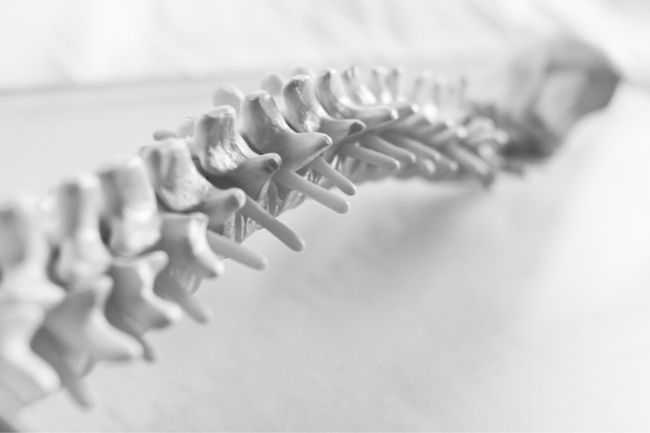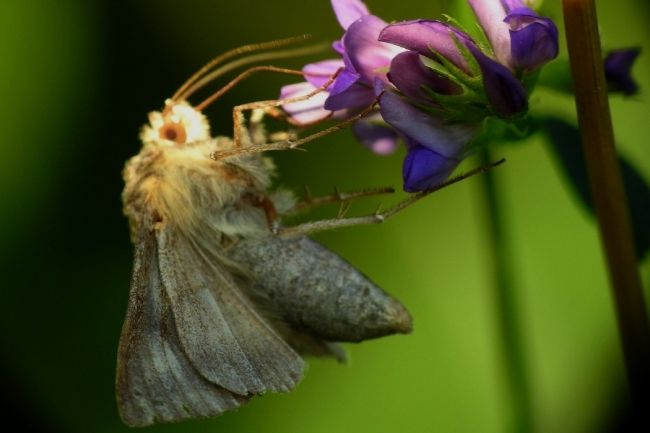Moths do not have a backbone or even bones. Instead of an internal skeleton, they have an exoskeleton, meaning a hard outer shell, that supports their bodies and protects them from damage.
Contents
What is a backbone?

The backbone, also known as the spine, is an essential part of the skeleton within the body of any vertebrate animal. Indeed, the word vertebrate comes from the fact that these animals have one key thing in common, the presence of a backbone.
Vertebrates are in the minority compared to invertebrates, those animals that do not have a backbone. However, the vertebrate group contains many of the species we have the most interest in. Mammals, fish, birds and reptiles are vertebrates.
If you were to look at the skeleton of any vertebrate species, you would likely see a great deal in common, even if their outer bodies looked entirely different. The key element to these skeletons is the central spinal column, holding together the rest of the animal’s bodily structures.
| Body Part | Description |
|---|---|
| Head | Contains compound eyes and antennae |
| Thorax | Segment with legs and wings attached |
| Abdomen | Main body segment with internal organs |
| Wings | Pair of large, membranous flying appendages |
| Antennae | Sensory organs for detecting odors and pheromones |
| Proboscis | Long, tubular mouthpart for feeding |
| Legs | Six jointed legs for walking and gripping |
| Exoskeleton | Tough, outer protective covering made of chitin |
Invertebrates, on the other hand, do not have a great deal in common. Invertebrate species include jellyfish, worms and insects. These animals have found many different ways to get about without a backbone, or an internal skeleton.
Within the vertebrates, the backbone is made up of a series of vertebrae, small interlocking bones that allow a great deal of movement within the long spinal column. As well as providing the body with central support, the backbone protects the spinal cord, a vital bundle of nerves that connects the brain to other areas of the body, helping to send out signals, and carry back data to the brain.
Do moths have a backbone?

Moths are a part of the insect world, meaning they are invertebrates, by definition animals without a backbone. Like all insects, moths have overcome the lack of a backbone by employing an external skeleton instead. This is known as the exoskeleton.
The moth’s exoskeleton is made up of chitin, the same material that our fingernails are made of. This skeleton acts both as a support to the insect’s body, and also armour against the outside world.
There are pros and cons to using an exoskeleton over an internal one. A major negative is that the insect cannot grow without shedding its exoskeleton. Shedding can be a very dangerous time for animals with exoskeletons. When they emerge from their exoskeleton, their new layer is soft and squidgy, providing no protection at all. While they wait for their new exoskeleton to harden, they are in a very vulnerable state and unable to protect themselves.
For moths, shedding takes place only as juveniles, as they have stopped growing once they reach their adult form. As caterpillars, They go through several instars, where they shed their skin to grow larger. Most go through around five instars before they enter metamorphosis.
During metamorphosis, their exoskeleton forms part of the chrysalis, within which their cells rearrange into a completely new form.
They emerge from their chrysalis in their adult form, which is soft and needs time to harden before they can continue on their journey.

Using an exoskeleton also limits how large these animals can get. The bigger the animal, the heavier the exoskeleton, until finally the animal can no longer move, and it would be entombed within its own body.
On the positive side, having an external armour can protect these animals from a great deal of harm. While a direct hit will cause vertebrates to suffer significant damage to their skin, muscles and organs, an exoskeleton can protect the softer parts from being damaged.
Like vertebrates, those invertebrates with exoskeletons move their bodies through a series of muscular connections with their exoskeleton. Movement is possible because of joins within the exoskeleton, which act like hinges.
While they lack the backbone itself, moths do have a central nervous system, that relays information from their brains to the rest of their bodies.
Nerves run from the brain along the body, with a series of ganglia along the way, to help control individual processes or gather information from sensors.
Also read: Difference Between a Moth and a Butterfly – Explained
Brave New world
The natural world is immensely fascinating with the wide variety of life it can present to us. While our own anatomy may seem the most obvious choice to us, clearly the presence of an internal skeleton and a backbone simply isn’t required.
Invertebrates outnumber vertebrates massively across the planet. From worms to beetles to sea cucumbers, clearly many species simply found other ways to get on with life.
Looking at the huge number of moths, with over 160,000 species worldwide, it’s clear they aren’t missing out by not having a backbone. So while being a vertebrate may make sense to us, it clearly isn’t the only way to be a global success.

